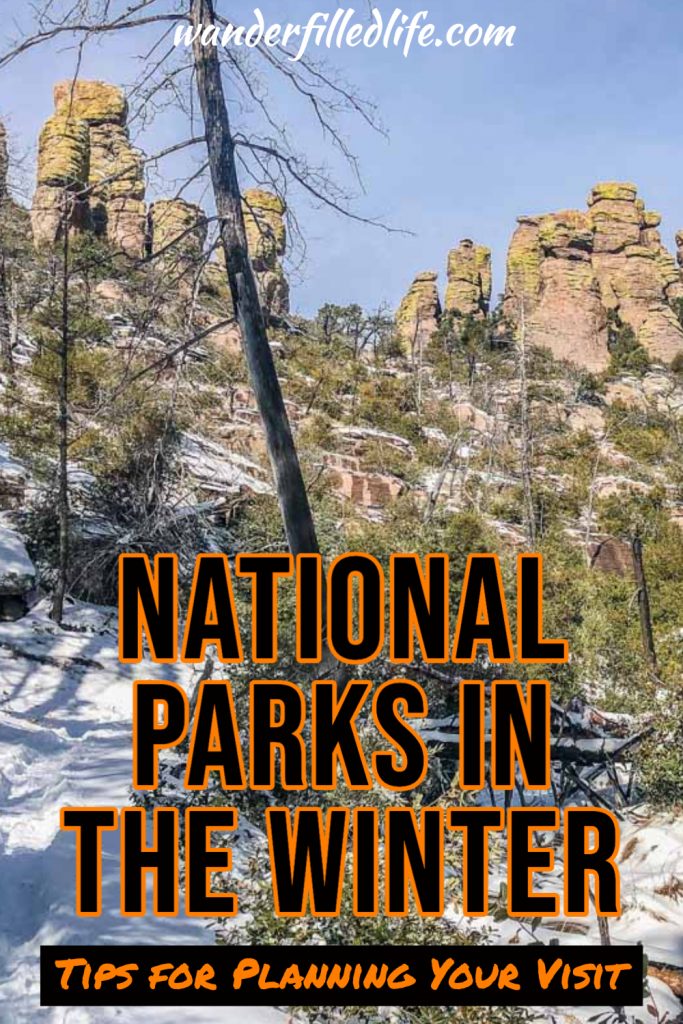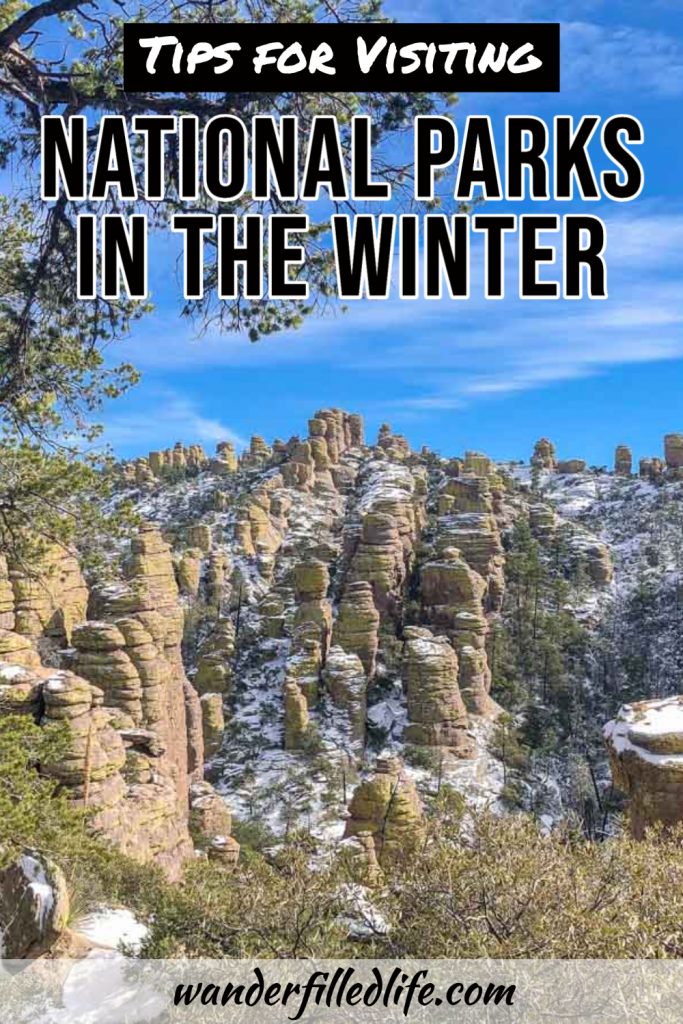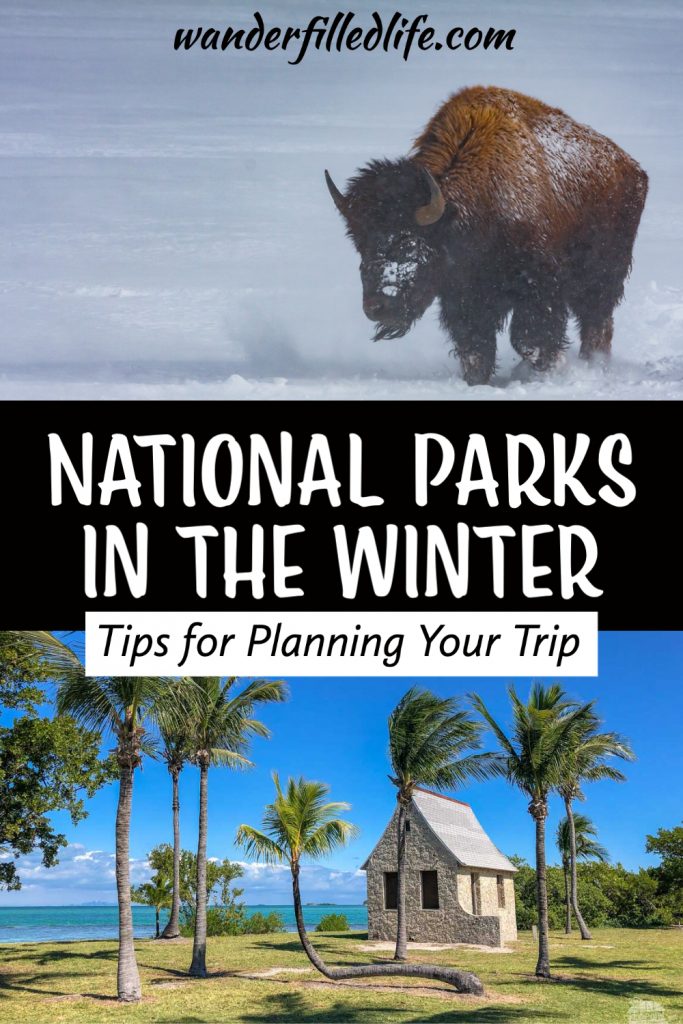By and large, the vast majority of people visit national parks in the summer. This makes a lot of sense when you consider school schedules and the fact that travel is generally easier in warmer months. If you’re looking to avoid the crowds or just want a different experience, you should consider visiting national parks in the winter.
That said, you definitely need to do your research before a winter visit to most national parks. Between winter weather, reduced services and seasonal closures, a winter visit is often quite different than a summer visit. It can still be a great experience, though. Sometimes, it may even be a better experience.
As teachers, we are well-aware of the time-crunch in visiting national parks any time other than the summer for most people. But, with the right planning visiting national parks in the winter can be a magical experience. And, don’t forget, the winter can be the best time to visit some of the national parks in the South.
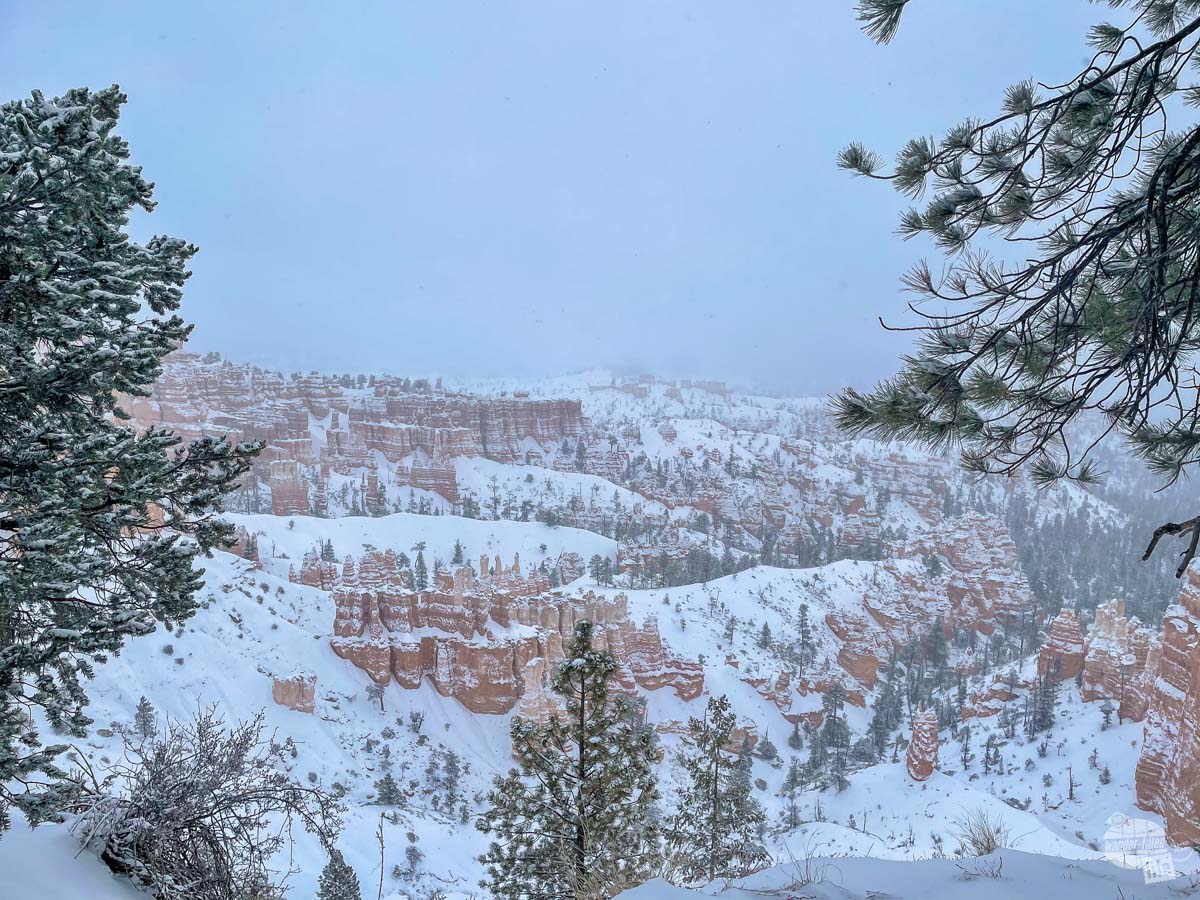
You can even take advantage of winter holidays and visit the parks over the Christmas, Hanukkah and New Year’s. Or perhaps just enjoy a long weekend for Martin Luther King, Jr. Day in January or President’s Day in February. Those lucky enough to have even more flexibility will, generally, find far fewer people in the national parks in the winter.
(Disclaimer: When we link to places where you can buy our stuff or places we stayed, we are using special codes that earn us commissions on the sales at no additional cost to you. Please see our Review Policy for more information.)
Tip #1 – Consider the Weather
Of course, the number one consideration for visiting national parks in the winter is the weather. If you are looking to embrace the cold and enjoy some winter recreation, there are plenty of parks that are open year-round. Just remember any park that gets winter weather is subject to at least temporary closures.
If you prefer to escape the cold, we definitely encourage you to head south! We’ve visited the South Florida national parks in February twice now and that is pretty much the perfect time to visit. Yes, in South Florida, you can generally wear shorts and t-shirts in February. We even went snorkeling and paddle boarding without needing a wet suit.
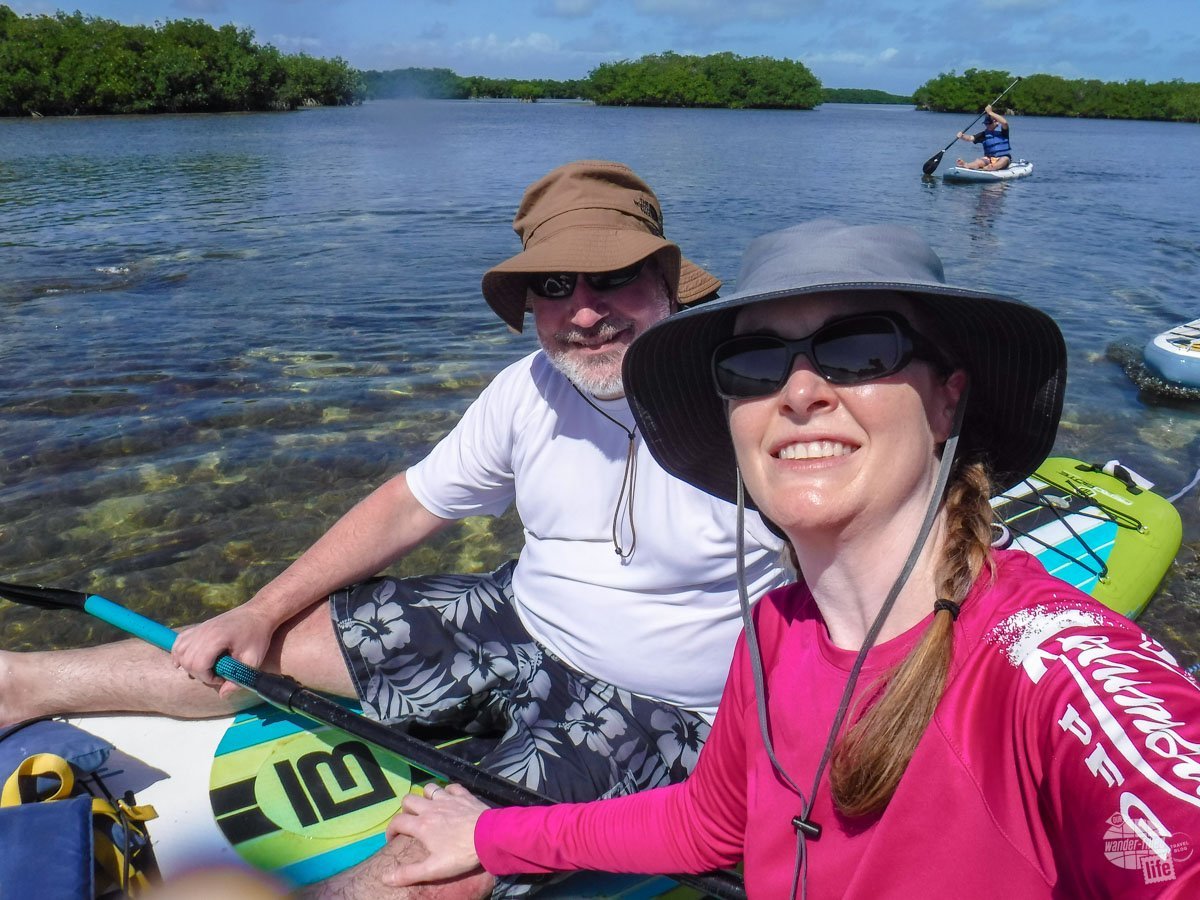
Also, don’t forget the parks in the Caribbean and in Hawaii. While we visited the Virgin Islands in the summer many years ago, we are eager to return for a more thorough visit to the national parks. Going in the winter would be a nice escape from cold temperatures (and a good way to avoid hurricane season).
Some of the best parks to visit in the winter are those that see extreme heat in the summer and, generally, mild temperatures in the winter. Southern Utah is a good example. We have visited all five of Utah’s National Parks in the winter and loved it. With mild temperatures and a relatively low number of visitors, it was a great time to visit. That said, the possibility of winter weather exists and can derail your plans.
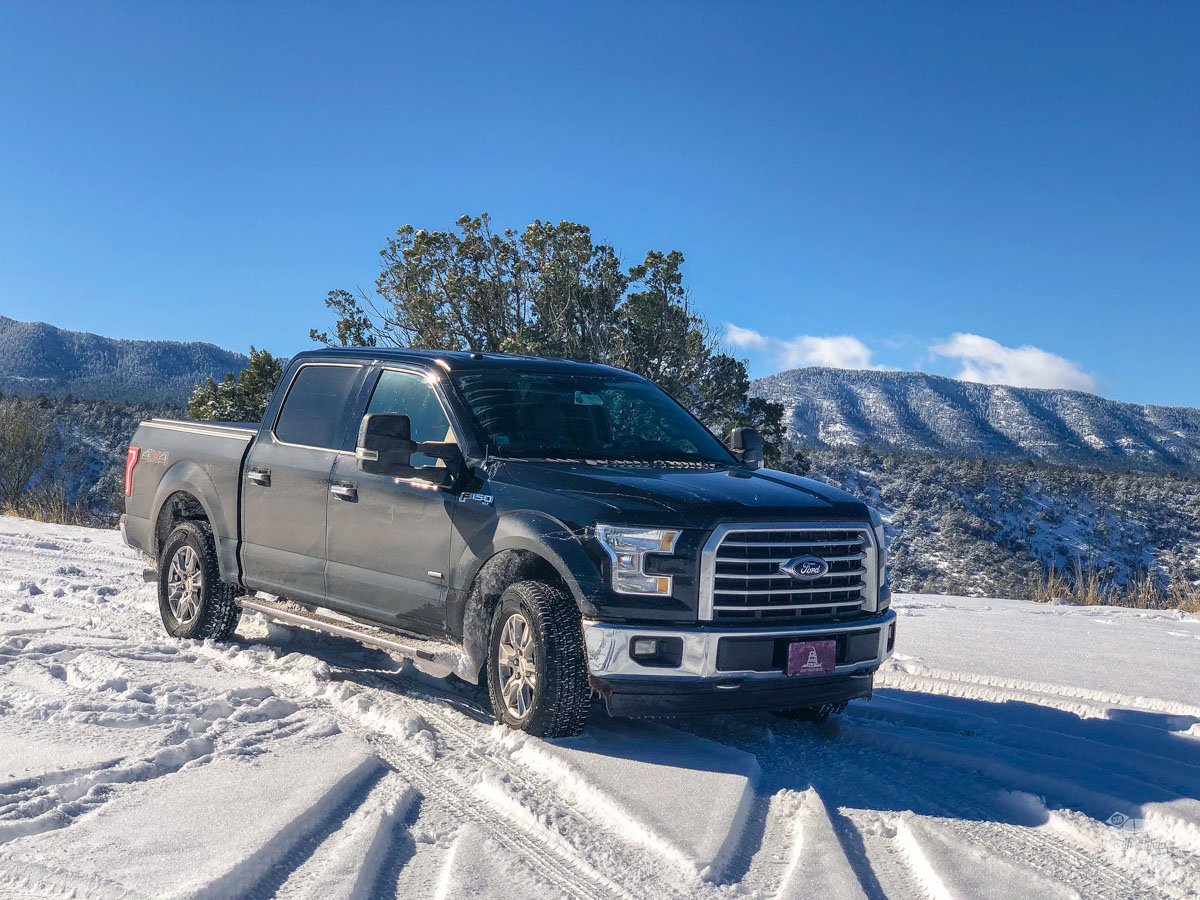
Tip #2 – Check for Park Closures and Reduced Services
The biggest thing to remember when visiting national parks in the winter is that just because a park is open does not mean it has the same services. Often, you’ll find some areas completely closed. Sometimes the visitor center is only open on certain days. Smaller sites may be closed completely. Additionally, you may have fewer options for dining and lodging.
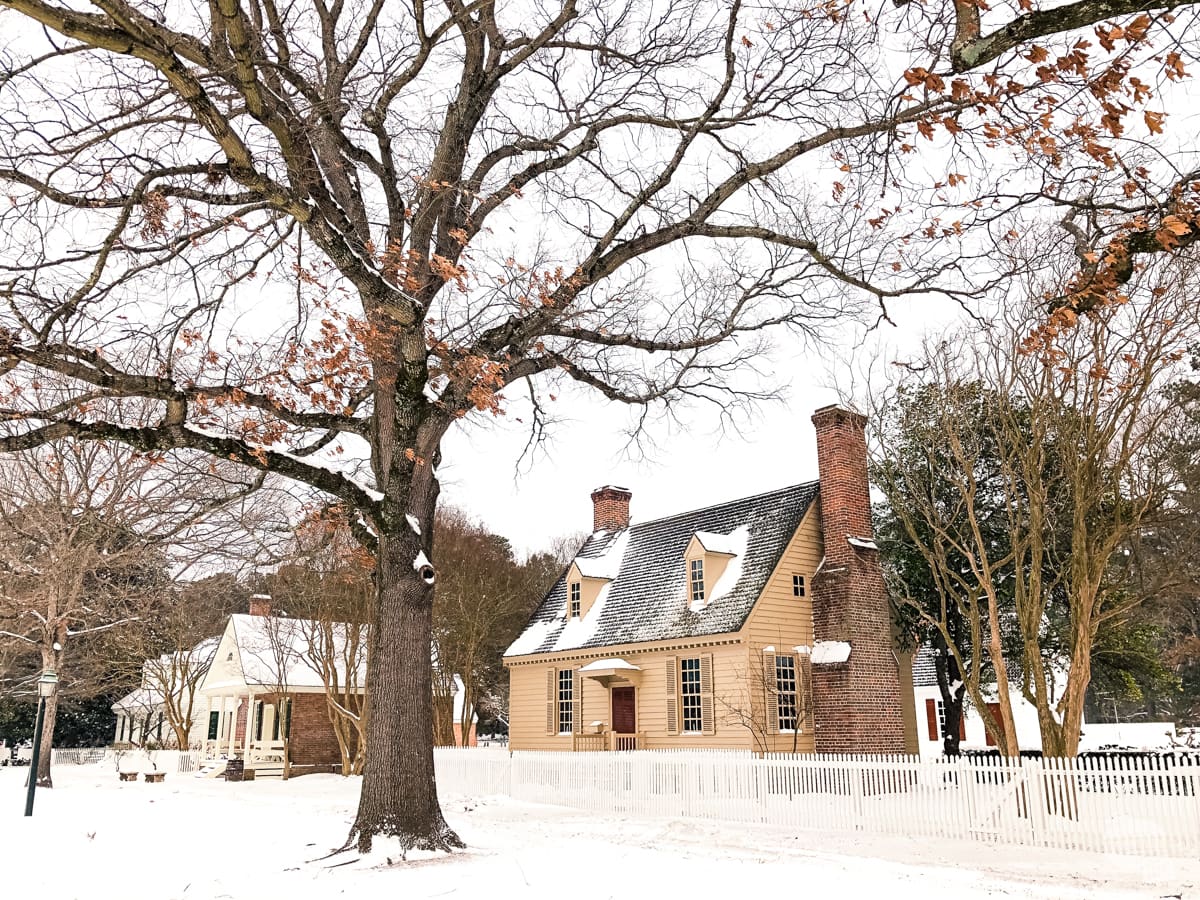
When we visited the mid-Atlantic parks in December 2017/January 2018, we found many sites were completely closed. For us, that was ok since we knew we didn’t have time to see everything in the area. Still, it took a lot of research to figure out exactly what was open and what wasn’t open. Be sure to check each park’s official website for operating hours as you begin planning your trip.
Even when parks are open, understand that they may not operate the same way in the winter. Take Yellowstone National Park, for example. In the winter, only one road is open to cars – the road from the North entrance through Mammoth Hot Springs and Lamar Valley to the Northeast entrance. While a winter visit to Yellowstone is absolutely magical and we highly recommend it, you need to do a lot of research and planning before going.
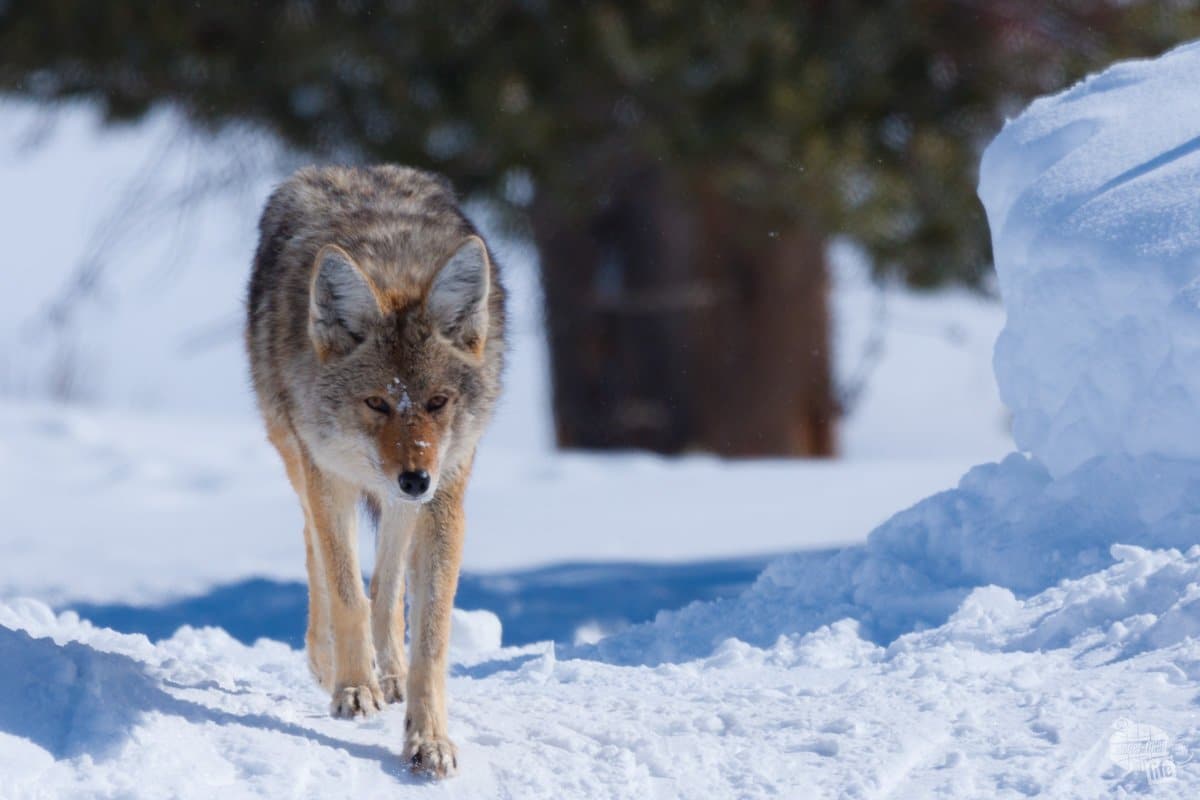
Finally, remember that not all parks will react to snow in the same way. Some parks can get roads plowed very quickly; others may just have to wait for the snow to melt. We have found that the park’s social media pages are often the best place to look for information on current conditions. A park’s official website may or may not be updated with daily changes and temporary closures.
Tip #3 – Be Flexible
When planning a visit to a park that could get winter weather, our biggest tip is to be flexible. This is both before your trip and while there.
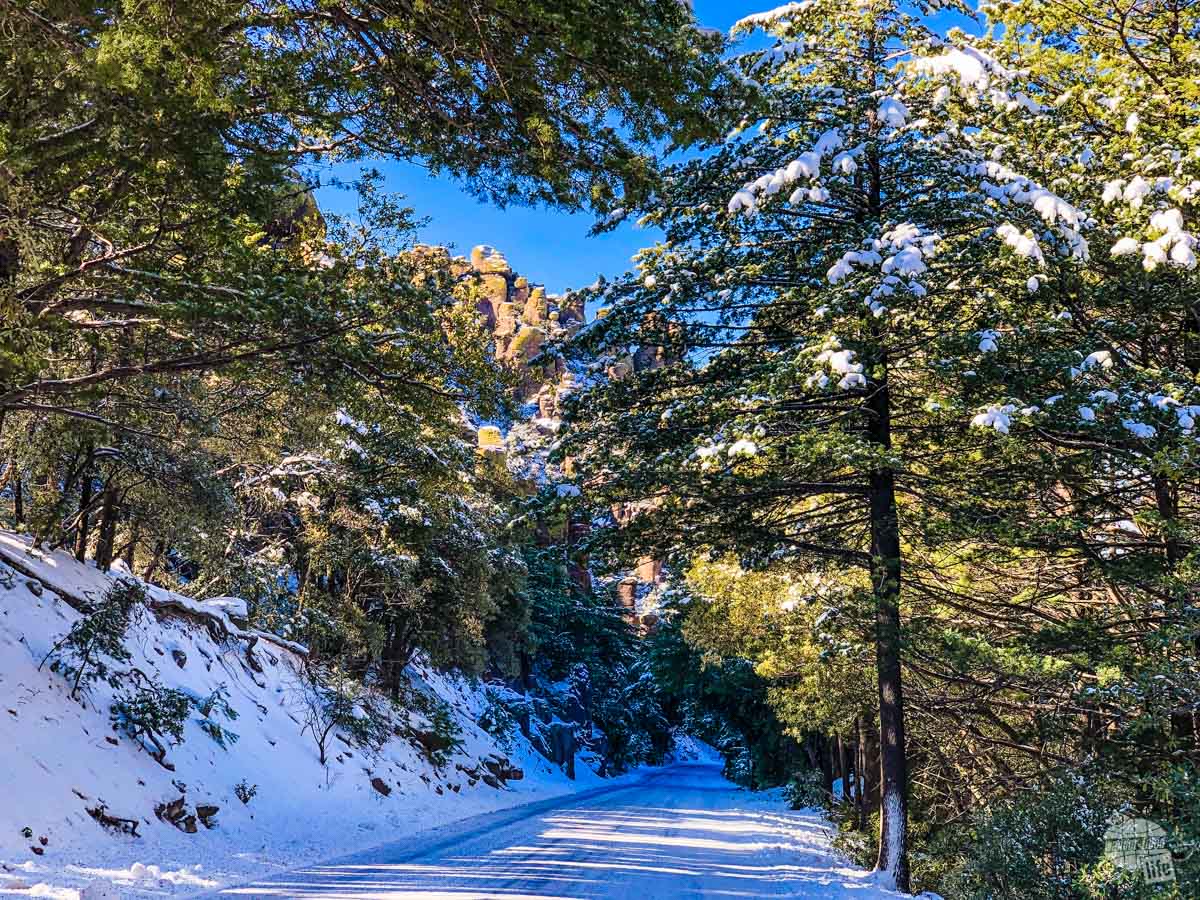
In December 2019, we headed out to El Paso, TX and southern Arizona and New Mexico. We had fairly mild temperatures for most of the trip. But some areas, especially those at higher elevation, did get some snow. We had to rearrange our plans a little because the main road at Chiricahua National Monument was closed for a few days. We were thankful that we had the flexibility in our schedule to give the park time to get everything plowed and ready for visitors.
For February 2021, we initially planned a trip to the Blue Ridge Parkway and Shenandoah National Park. We knew there was a chance of snow and, honestly, hoped that we would see some. Unfortunately, in the two weeks before our visit, the area got hit by a couple of snowstorms and meteorologists predicted even more snow while we were there. Ultimately, we had to cancel the trip because the region got way more snow than they could handle.
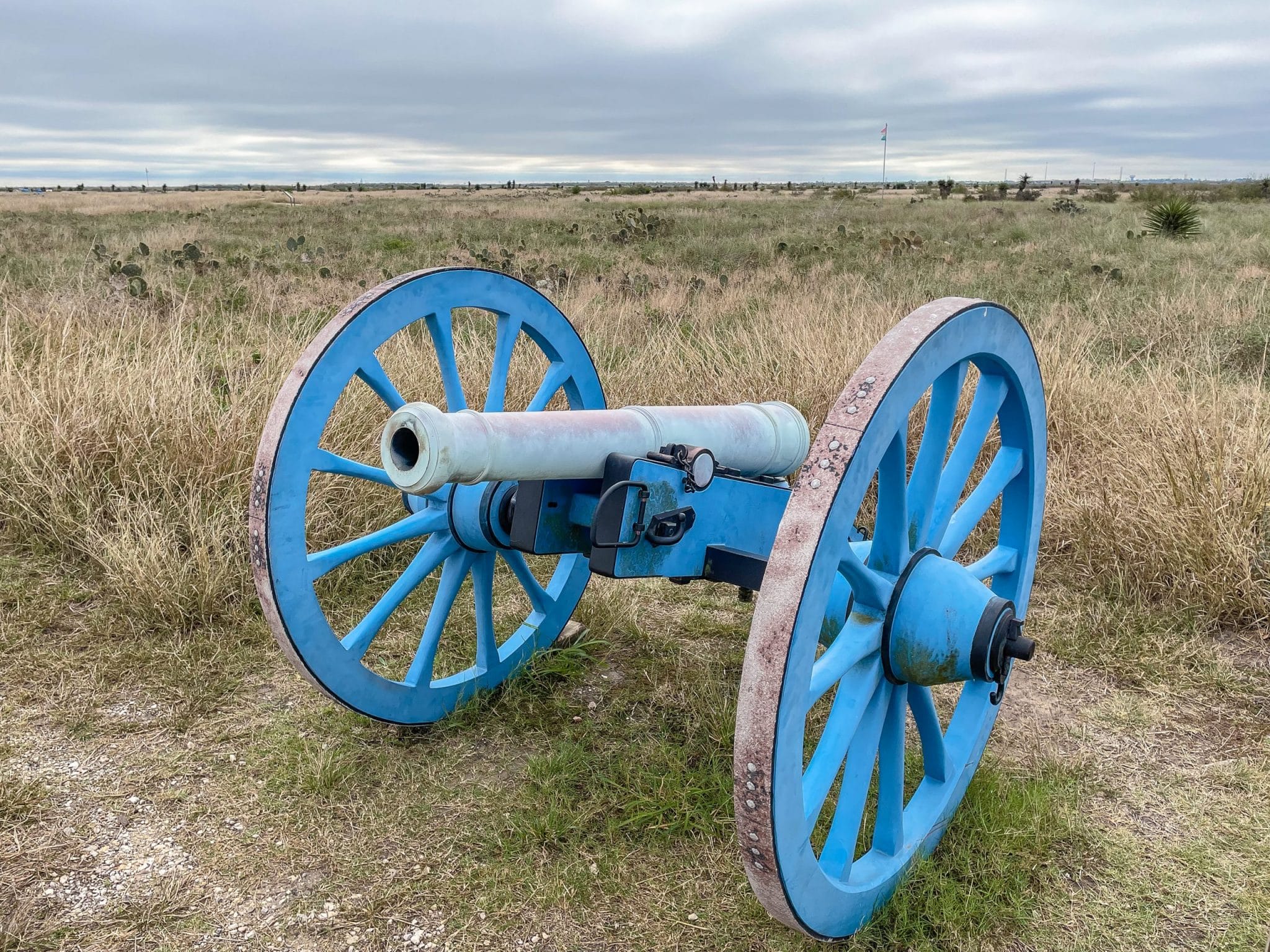
Honestly, though, things sometimes just don’t go your way. After canceling the trip to Shenandoah NP, we decided to visit Texas. Because of the winter storm headed for Dallas, we went south to Brownsville to visit the Palo Alto Battlefield National Historical Park. We also planned to visit Padre Island National Seashore. Even though that region didn’t see a lot of snow, the winter weather affected pretty much the entire electricity grid in Texas. I’m sure you saw and remember the news stories.
Needless to say, that trip ended up looking A LOT different than we expected!
Tip #4 – Dress Appropriately
If you’re planning to hike or do any sort of outdoor recreation in the winter, good cold-weather gear is a must. Jeans and a cotton shirt are fine when you’re just driving around and maybe stopping at a few overlooks. If you plan to be outside for any amount of time, and especially if you are hiking and working up a sweat, you’ll need something better.
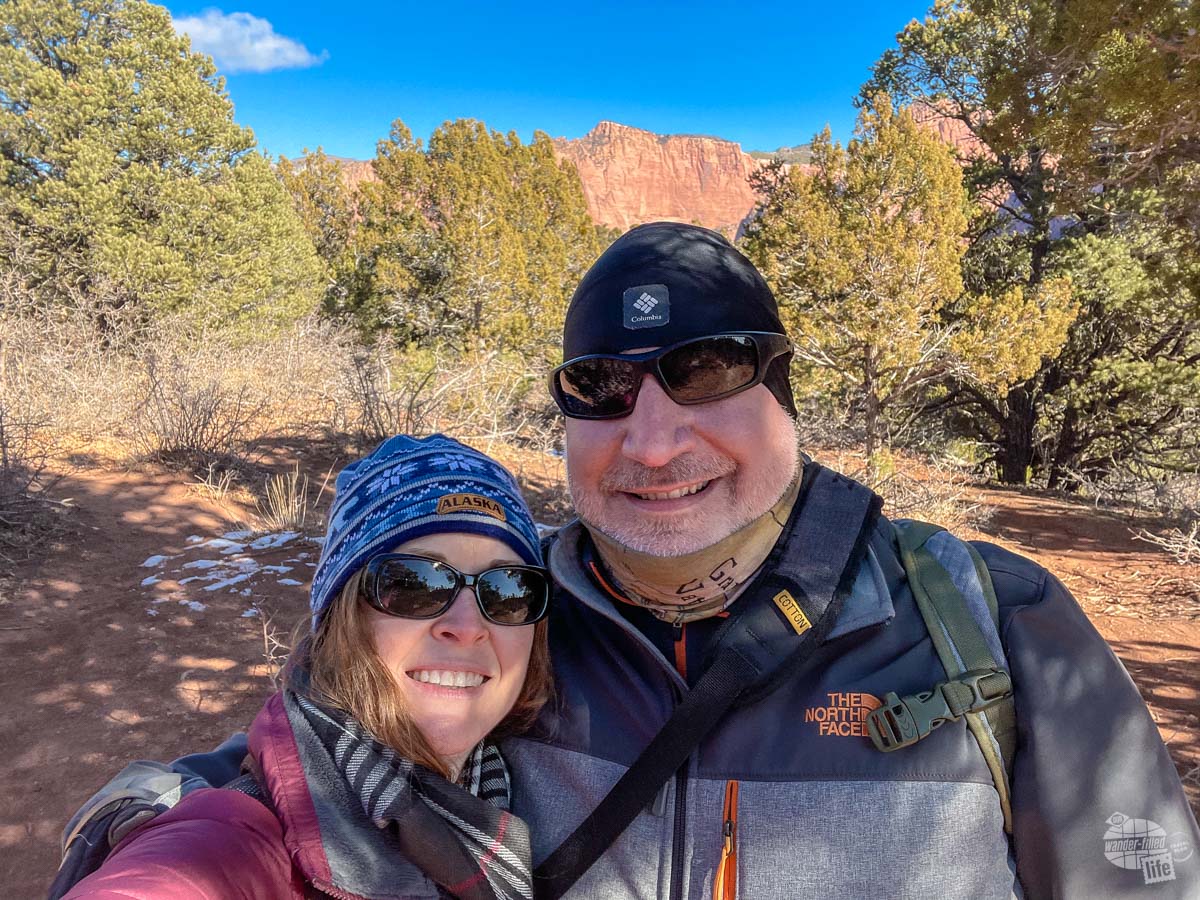
We recommend moisture-wicking layers, a good jacket, gloves, a hat, non-cotton socks and waterproof shoes, at a minimum. Stay tuned for Grant’s upcoming article on our gear recommendations for hiking in cold-weather.
Why Visit National Parks in the Winter
When you have to consider reduced services, cold temperatures and possibly weather-related closures it might seem like visiting national parks in the winter is more trouble than its worth. We actually think it’s a great time to visit!
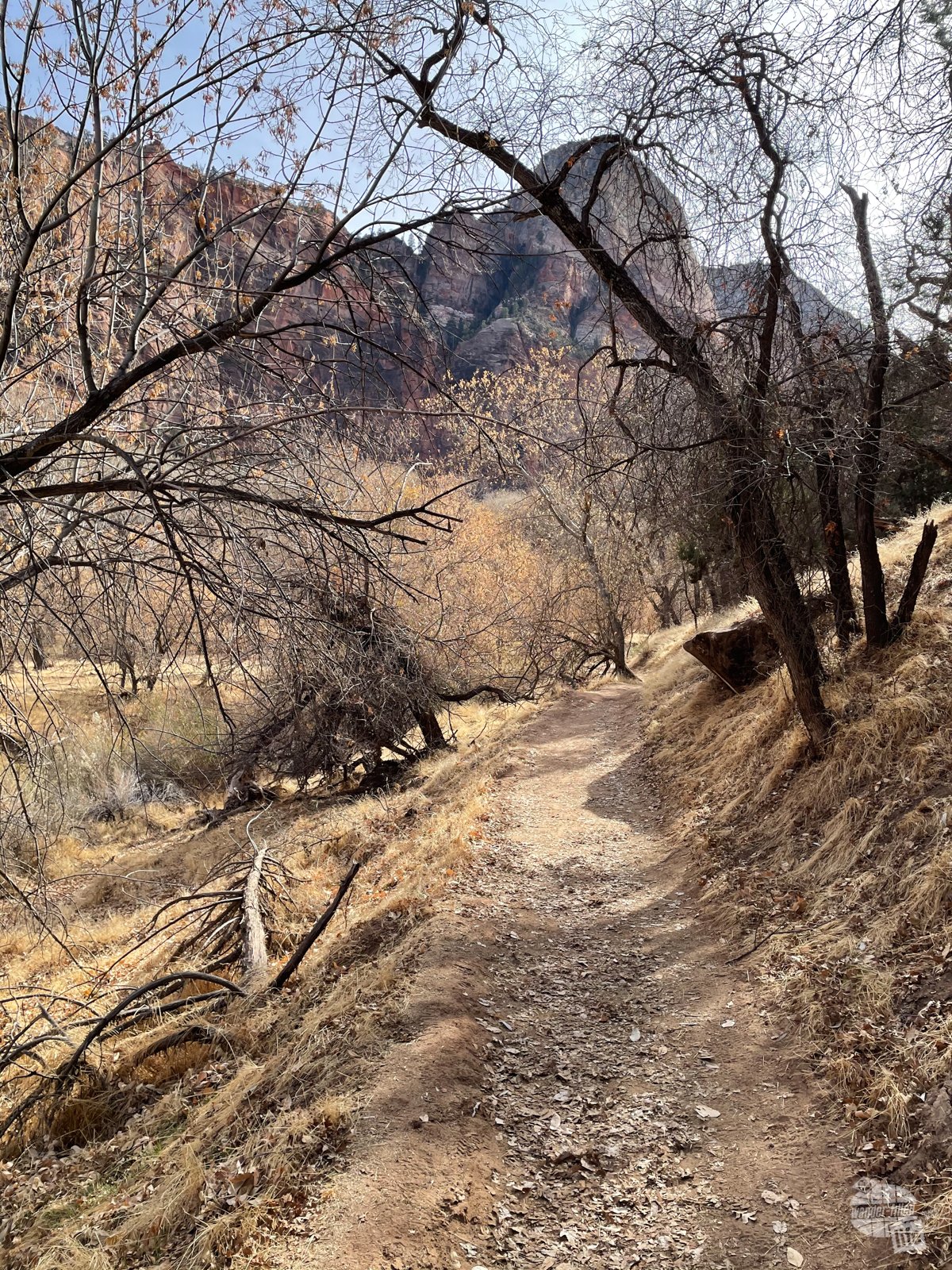
For starters, you’ll generally find fewer people in the parks in winter. At Zion National Park, the 4th most-visited designated National Park, we were able to enjoy nearly an hour on a trail without seeing a single other person. Granted, I’m sure that was in large part because we were hiking towards a closed shuttle stop but, still, it was amazing. I would never expect to hike an hour in Zion Canyon without seeing another person in the summer.
In the southern parks, temperatures in the summer can be downright miserable. Visiting Everglades National Park in the summer, when temperatures can easily be in the 90s, does not sound like fun. Instead, we enjoyed temperatures in the 70s in February.
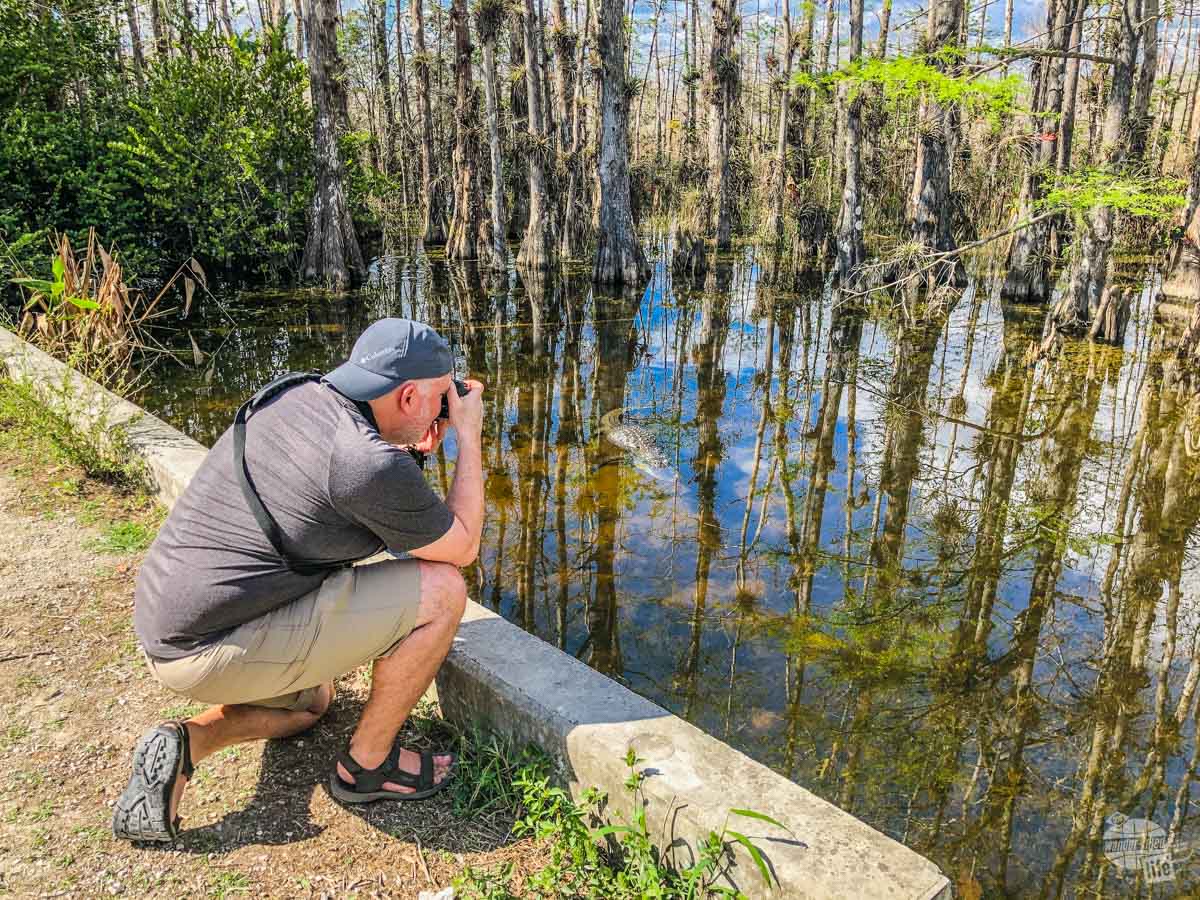
While we like mild temperatures and fewer crowds, perhaps our favorite thing about visiting national parks in the winter is simply the snow-covered landscapes. Yes, most of the parks are gorgeous any time of year. There’s just something about the snow that makes many of the scenic landscapes even more scenic and magical, though.
And, really, what can beat a snow-covered bison hovering over a thermal feature?
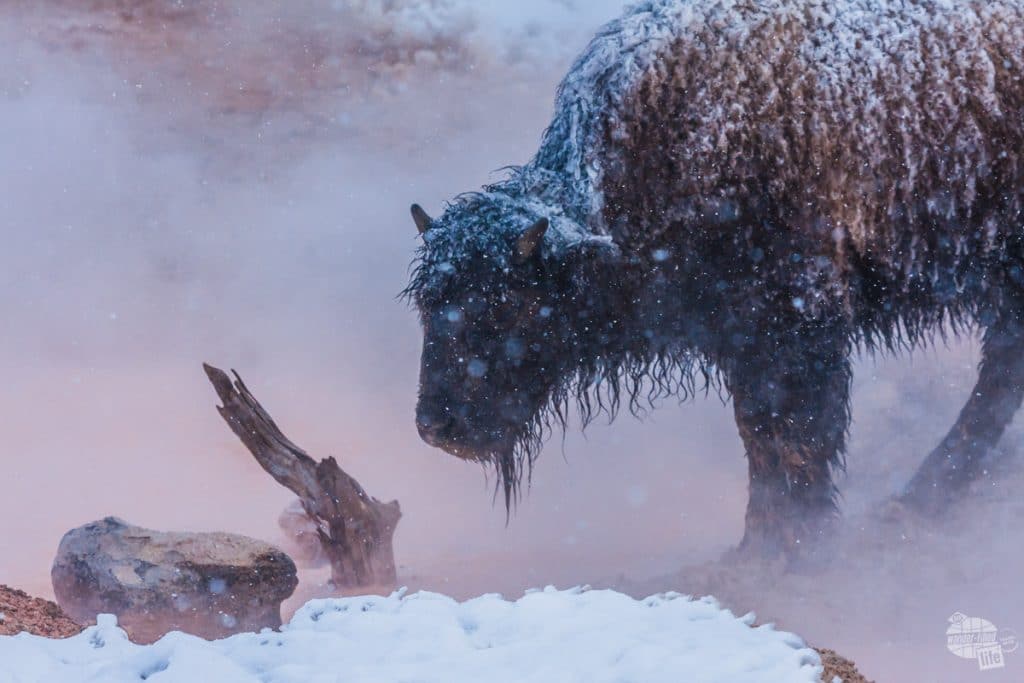
We’d even suggest visiting some parks in both the summer and winter just to have different experiences. Truly, some parks just aren’t the same in different seasons.
Our Favorite National Parks to Visit in Winter
So, what parks are best in the winter? Well, that all depends on what you want to see and do. Below, I’ve got some of our favorite parks to visit in the winter. I’ll admit, we still have many more parks to visit in the winter. But, these are the ones we’ve enjoyed the most, so far.
Yellowstone National Park
Truth be told, Yellowstone is our favorite national park any time of year. And, there are certain things that you just can’t experience in the winter at Yellowstone. For that reason, a summer visit is a must. But, if you really want to embrace the cold and enjoy some snowy recreation, Yellowstone is the place to go.
Check out our tips for visiting Yellowstone NP in the summer.
For us, there’s just something about Yellowstone in the winter that you have to experience to understand. The snowy landscapes and solitude are just incredible.
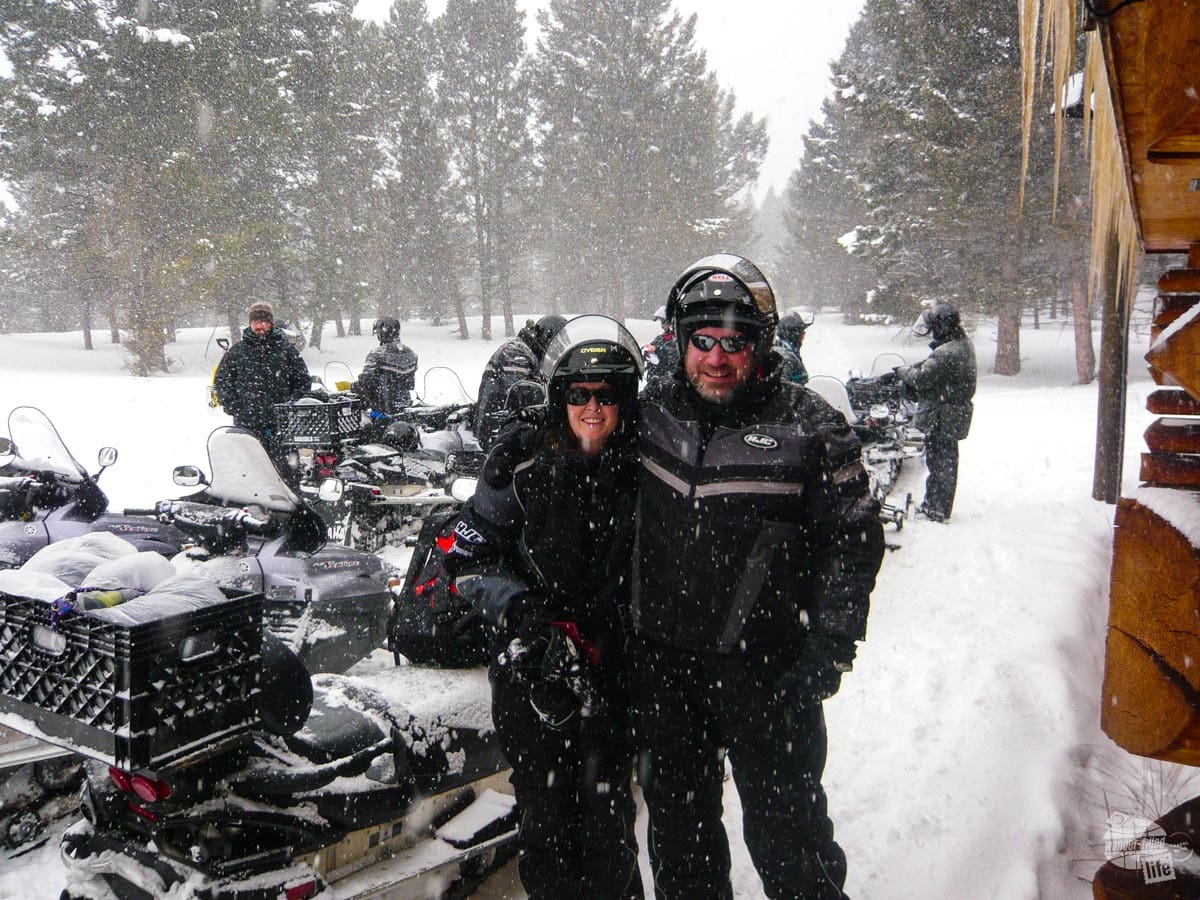
We visited in February 2011 for a 3-day snowmobiling trip. Since the roads are closed, the only way to really get around the park is by snow coach or a guided snowmobile tour. Our tour was an absolute blast! Unfortunately, the tour we did way back then is no longer offered. But you can find a list of approved concessionaires on the park’s website.
There are also plenty of opportunities for cross-country skiing and snowshoeing.
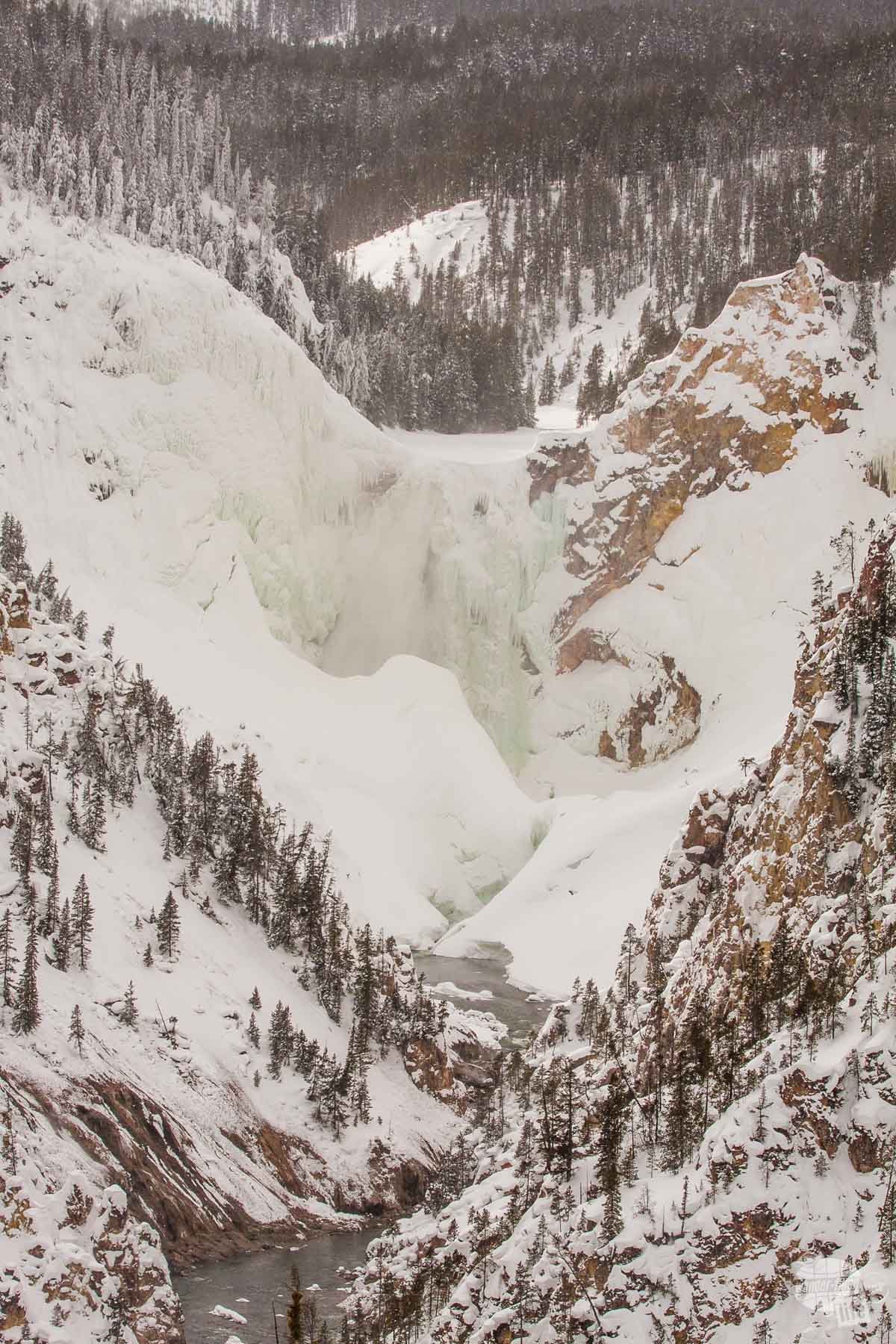
We’ve talked about returning in the winter for many years now. I’m not sure when it will actually happen but, hopefully, it will be sooner rather than later!
Everglades and Biscayne National Parks
As mentioned previously, we’ve visited the South Florida parks twice in February. Honestly, between the mild temperatures and the balance between the rainy and dry seasons, there’s no other time I’d rather visit.
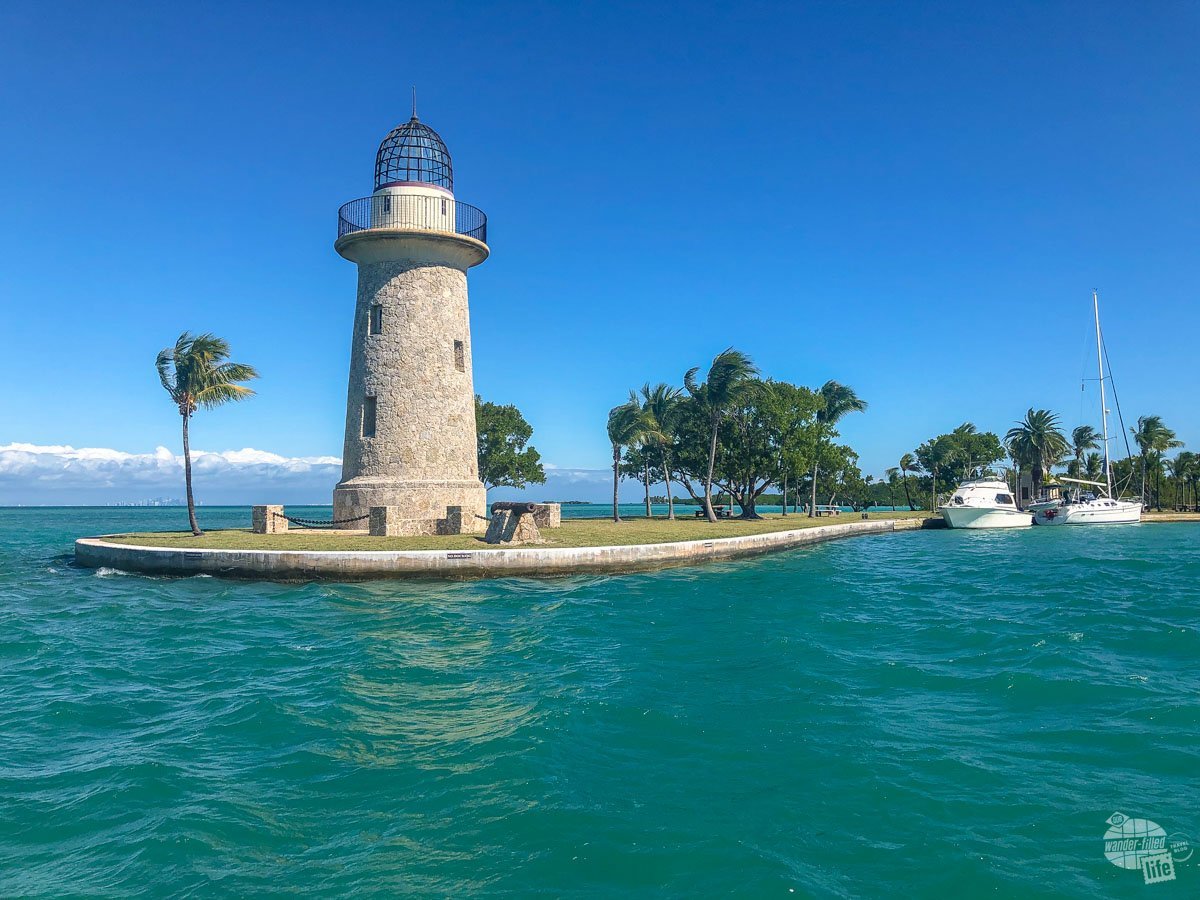
In the summer, the temperatures can be extremely high. And, when the water levels drop in Everglades National Park, you miss out on canoeing and other activities. So, timing your visit with the temperatures and the rain is important.
One great thing about the South Florida parks is their proximity to each other. You can easily visit Biscayne National Park, Everglades National Park and Big Cypress National Preserve in about 3-4 days. With another 2-3 days, you can also add on a visit to Dry Tortugas National Park off the coast of Key West.
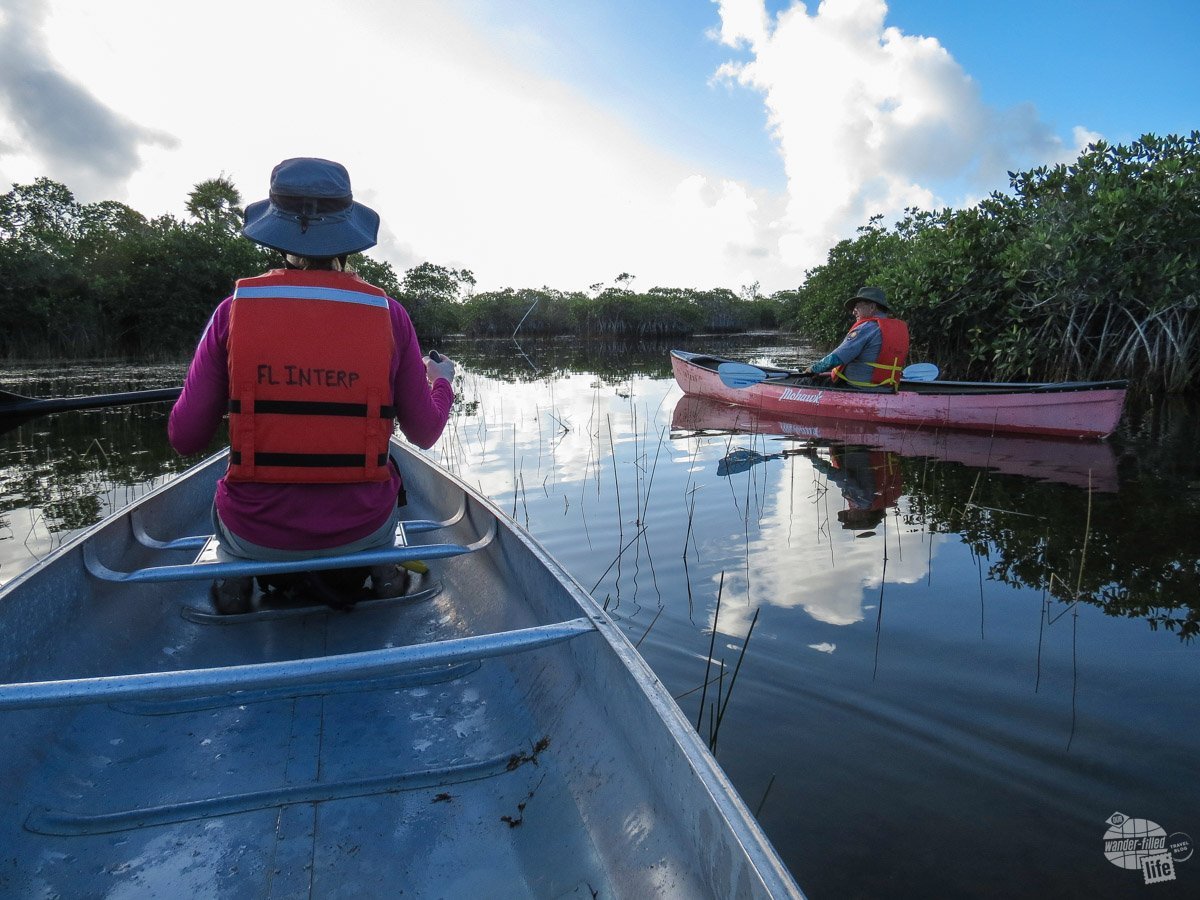
The best part of visiting the South Florida national parks in the winter you don’t have to worry about winter weather at all! In fact, the main thing you have to worry about is packing enough sunscreen and sandals.
Check out our guide to the South Florida national parks.
Chiricahua National Monument
Located in southeastern Arizona, Chiricahua National Monument is a nice little hidden gem of a park. The park has an 8-mile scenic drive and 17-miles of hiking trails. There is also a small historic area.
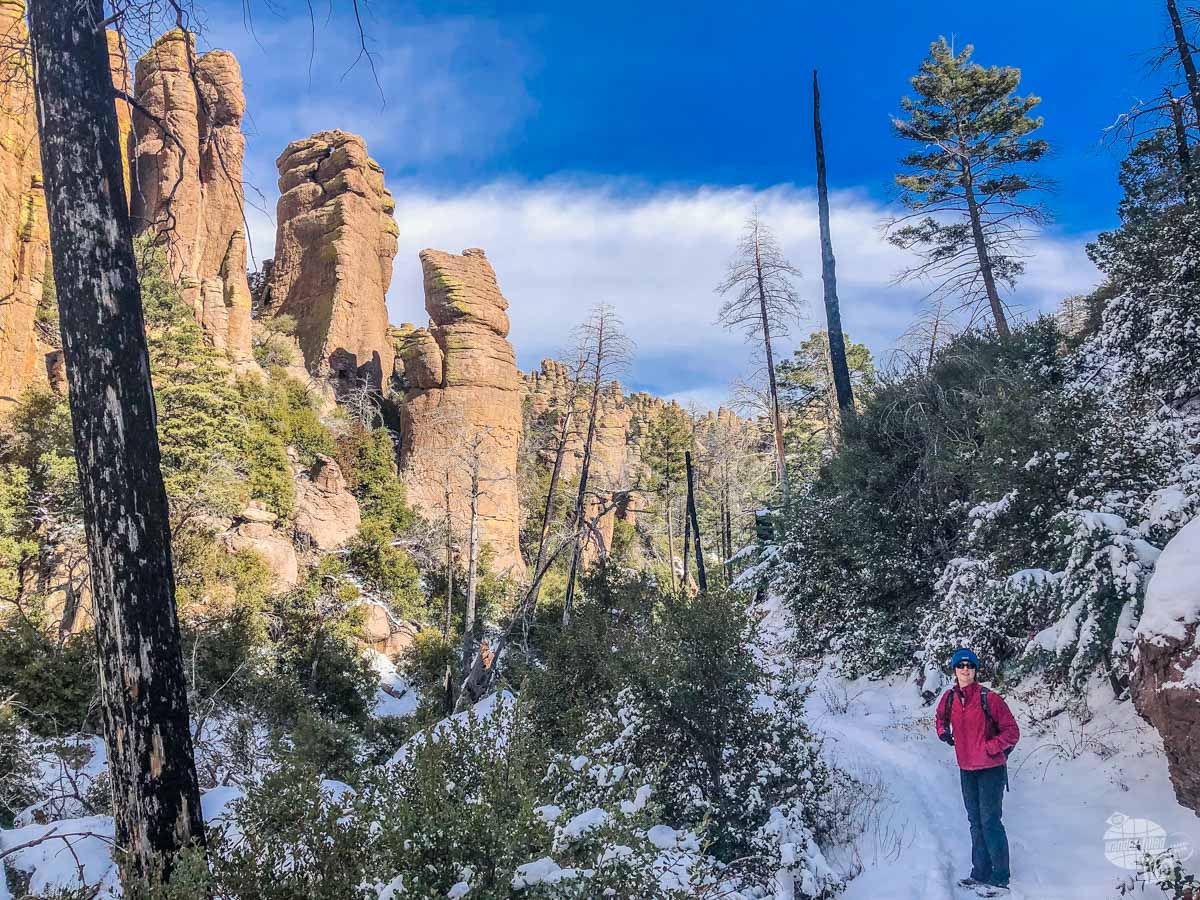
In the winter, you can expect highs in the mid-50s most days. The park does get a few inches of snowfall each year but, generally, not a significant amount. That said, we were there just after a pretty good snowfall and found a decent amount of snow in some places.
What we loved most about this park are the unique rock formations. The park is especially interesting when you consider that it’s surrounded by desert. These rhyolite rock pinnacles are somewhat similar to the hoodoos at Bryce Canyon but gray in color and framed from volcanic ash and debris.
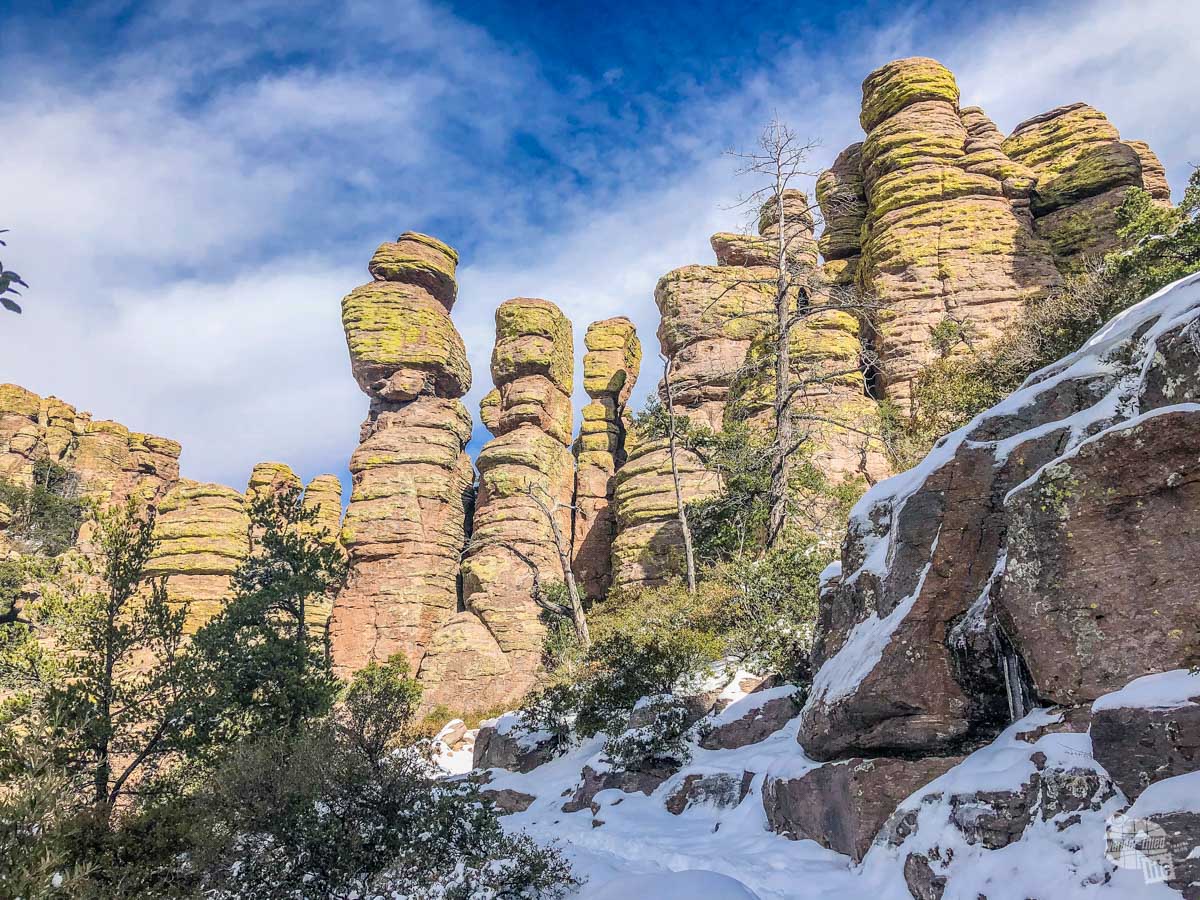
We enjoyed hiking through Echo Canyon and definitely want to come back for more hiking and camping!
Read more about our visit to Chiricahua National Park.
Grand Canyon National Park
The true benefit of visiting the Grand Canyon in the winter is the lack of crowds. When we were there in December 2020, we had no problems driving around or parking. We experienced a few crowded areas but, overall, found plenty of places all to ourselves.
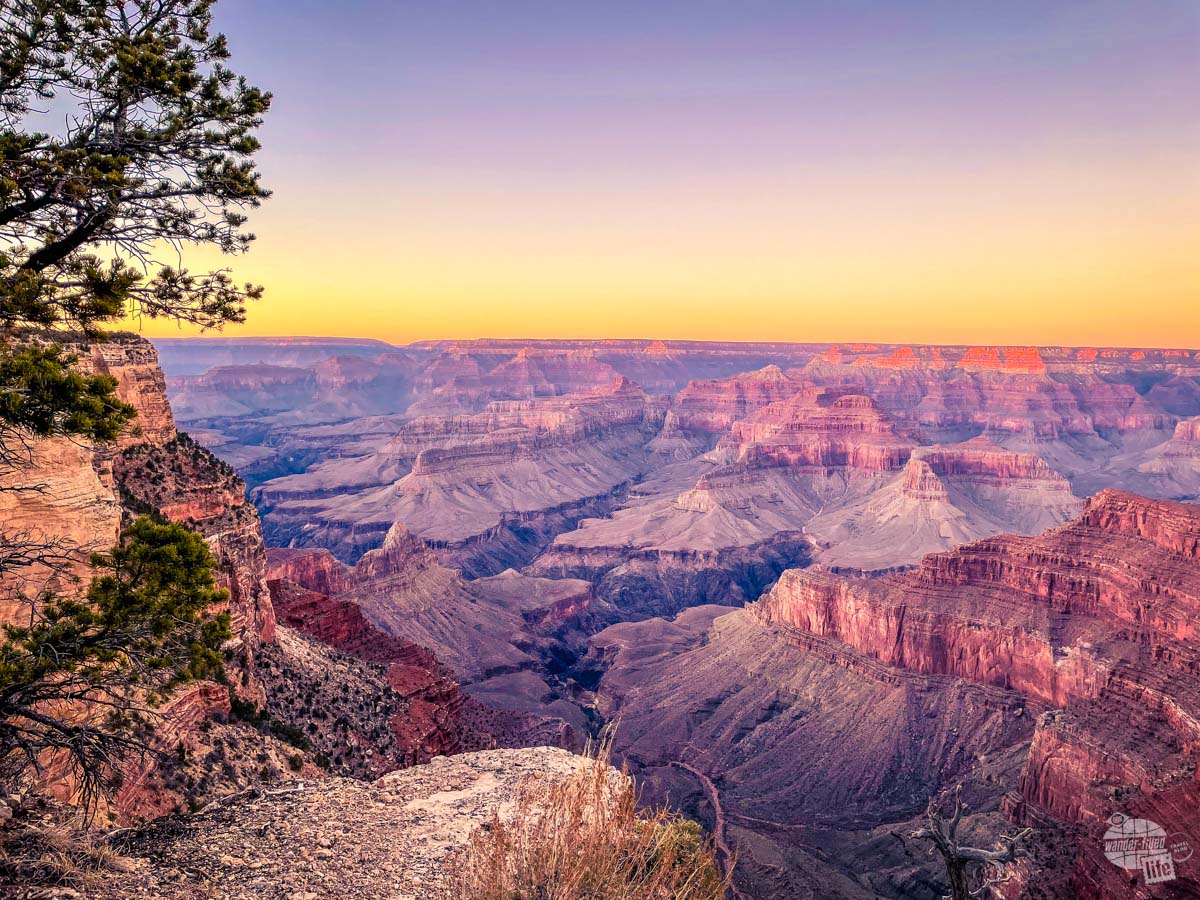
Additionally, we were able to hike down into the canyon without worrying about heat stroke. Granted, it’s still a difficult hike back up but, it’s much easier in 50-degree temperatures than 90-degree temperatures.
Perhaps the biggest downside to visiting in the winter is that the North Rim is closed. Because the North Rim is roughly 1,000 feet higher in elevation, it gets considerably more snow than the South Rim. For that reason, the North Rim is only open mid-May to mid-October.
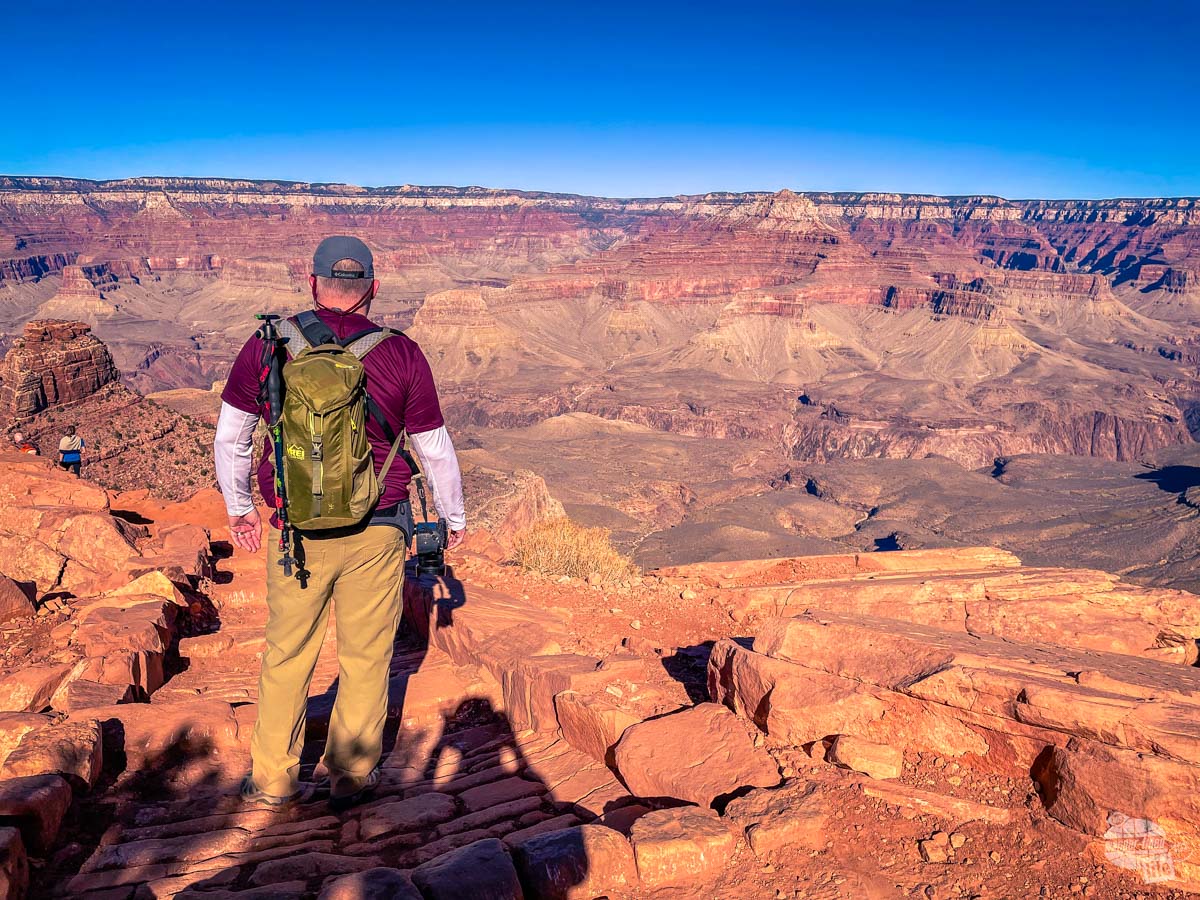
You do have to keep an eye on the weather if visiting the Grand Canyon in the winter, though. The South Rim can get a good amount of snow, though we didn’t experience it when we were there. Honestly, seeing the canyon covered in snow would be absolutely amazing, though.
Just be aware that if you plan on hiking into the canyon when there is snow or ice on the ground, you will need YakTrax or some sort of shoe traction. Still, you can also get amazing views right at the rim without worrying about a slippery and strenuous uphill.
Check out our guide for spending one day at the Grand Canyon.
Utah’s Mighty Five
Southern Utah is truly a treasure trove of scenic landscapes. Its five designated National Parks are often collectively referred to as the “Mighty Five.” These five parks, Arches, Canyonlands, Capitol Reef, Bryce Canyon and Zion are some of the most-visited of the 63 National Parks. As such, visiting in the winter offers a nice opportunity for somewhat less crowded conditions.
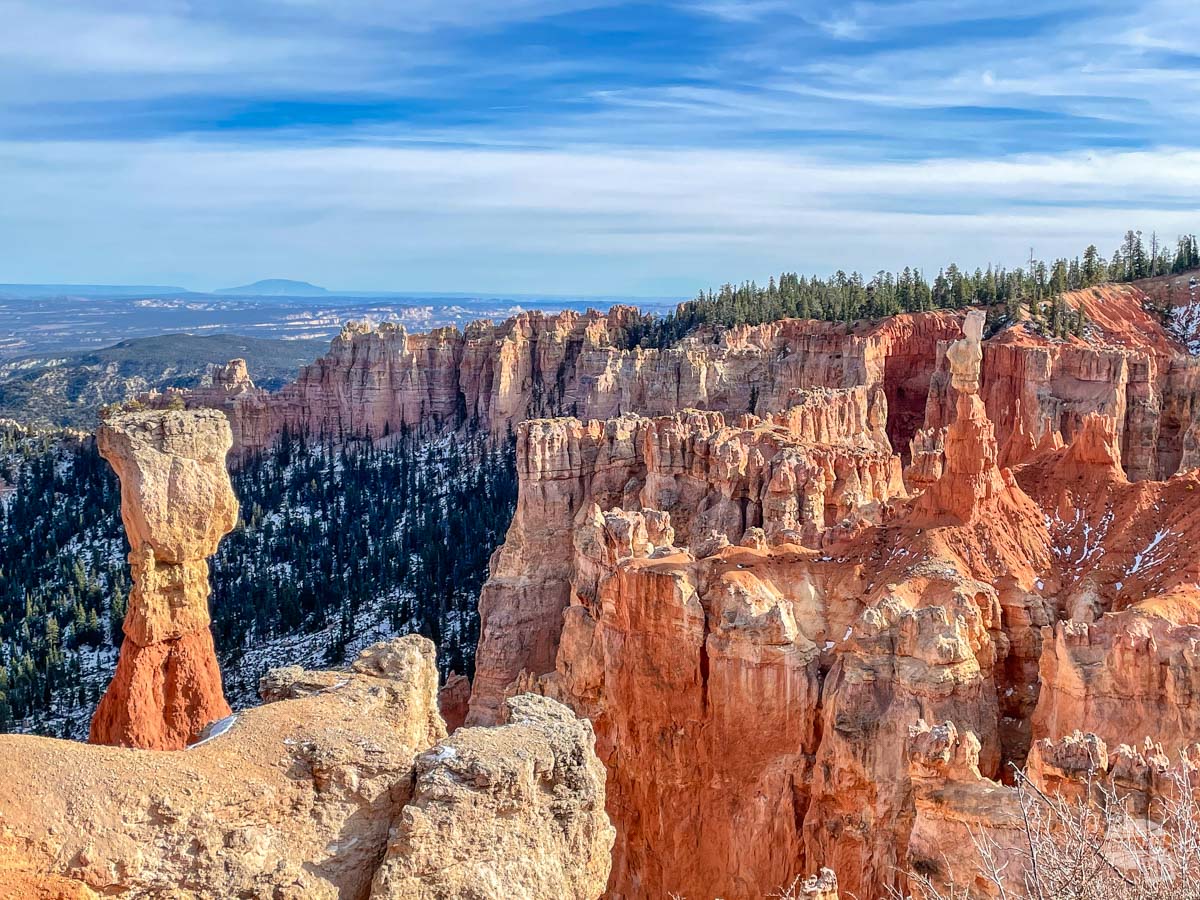
Of course, these parks are a great example of parks that could see at least temporary closures due to winter weather. On our most recent visit to Southern Utah, snow rolled in while we were in Bryce Canyon NP. Thankfully, we were able to enjoy the scenic drive and do some hiking below the rim before the snow started. Once the snow started coming down, the park had to close the scenic drive until they could get it plowed.
At Capitol Reef NP, a larger-than-average snowfall kept the scenic drive closed for the better part of our visit. Indeed, we ended up having only about an hour before sunset to drive the main road into the park. Also, one of the highlights of the park, the historic Gifford House is closed in the winter. While we loved our winter visit to Capitol Reef, there is no doubt that we will return in the summer for their infamous fruit pies.
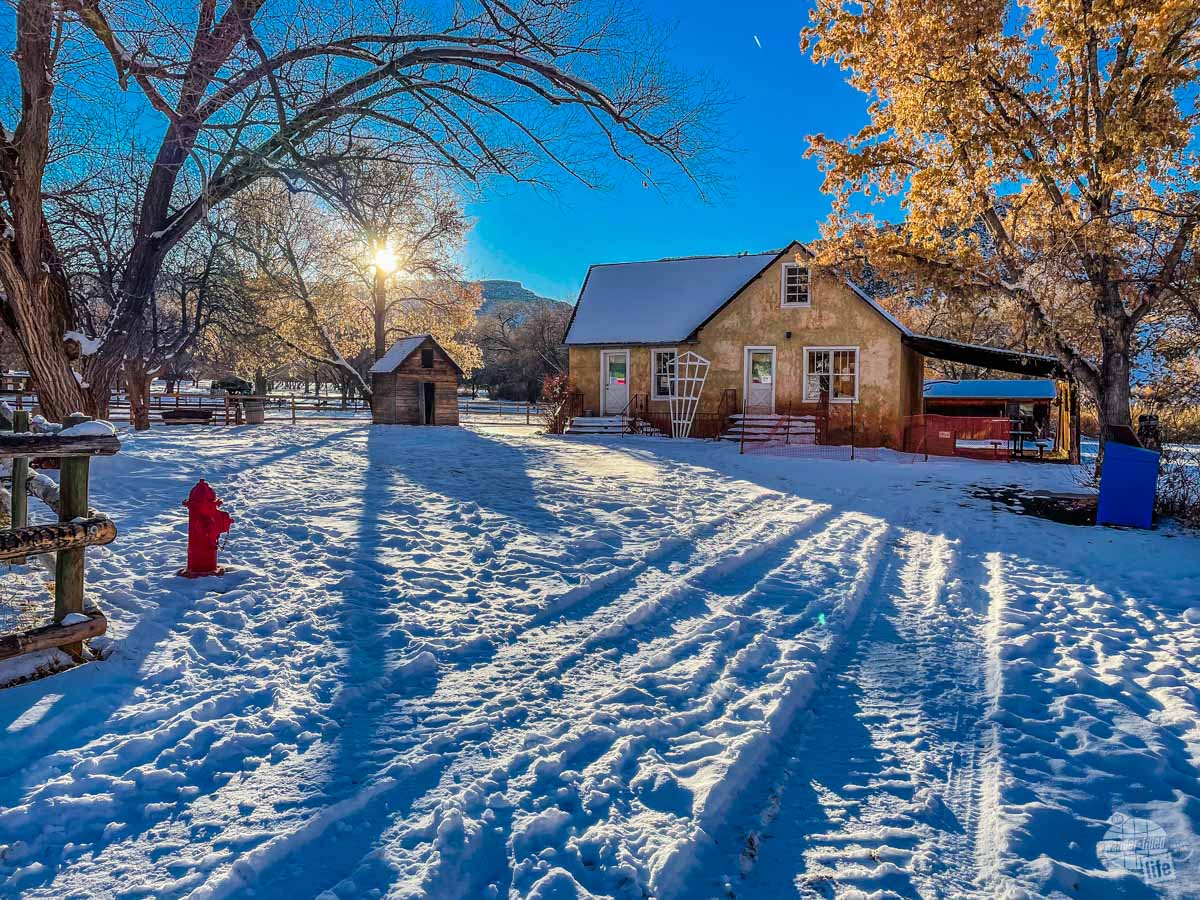
Still, with cooler temperatures and smaller crowds, visiting the Utah National Parks in the winter can be a great time. Just keep your itinerary flexible and keep an eye on the weather.
Check out our tips for visiting the Utah National Parks in the winter.
Final Thoughts on National Parks in the Winter
Visiting national parks in the winter can be a great vacation. With the opportunity for winter recreation, you can enjoy different experiences than in the summer. And it’ll be more comfortable without the extreme summer heat and crowds.
But, keep an eye on the weather and be ready to change your plans. Between snow, ice and unexpected closures, we almost always have to switch to “Plan B” (or C or D or Z) on a winter vacation.
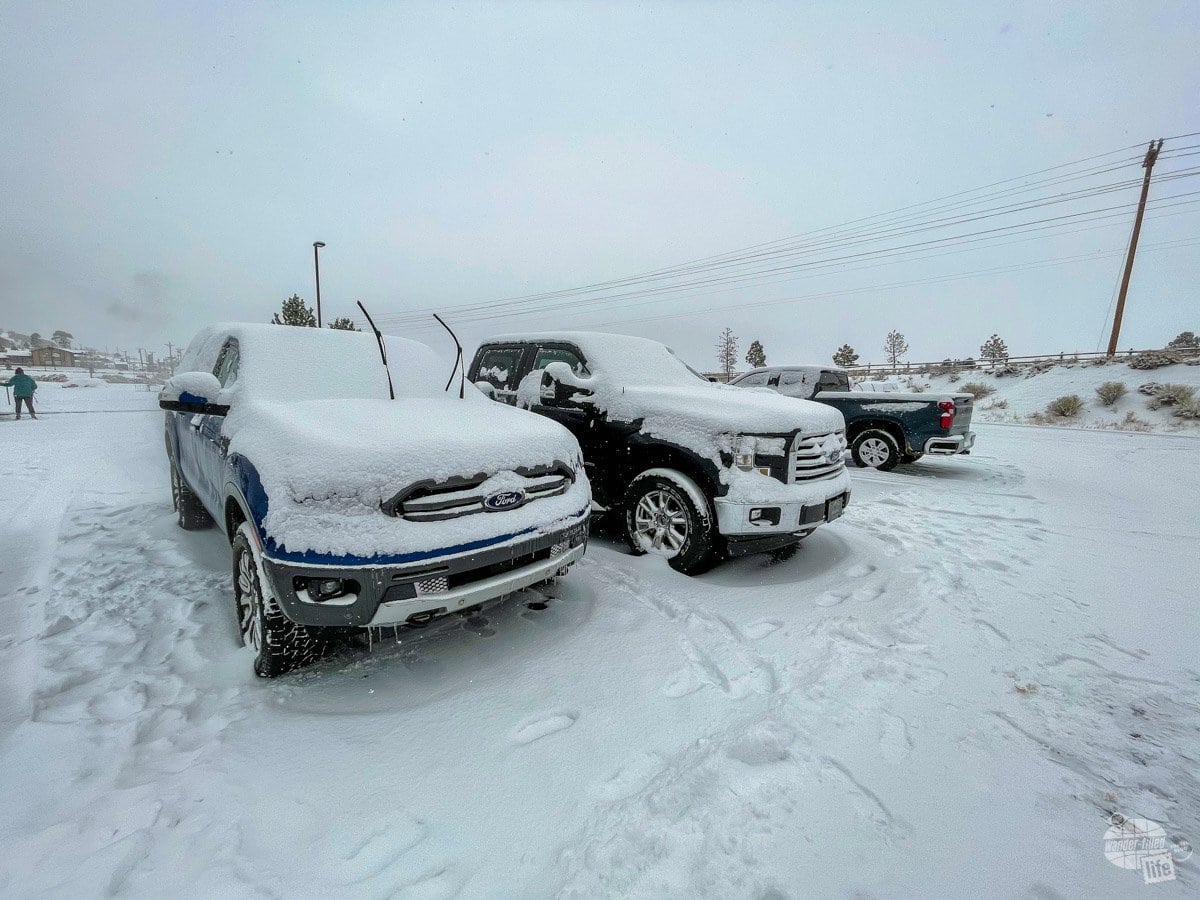
If you’re driving, you’ll want to make sure you’re at least prepared for basic emergencies. Having snow chains or cables with you is always a good idea. You should also have a basic emergency kit and food and water.
Check out our tips for preparing for a winter road trip.
While traveling in the winter might seem a little daunting, it’s not impossible. And, that’s coming from two people who have lived in the South their entire lives!
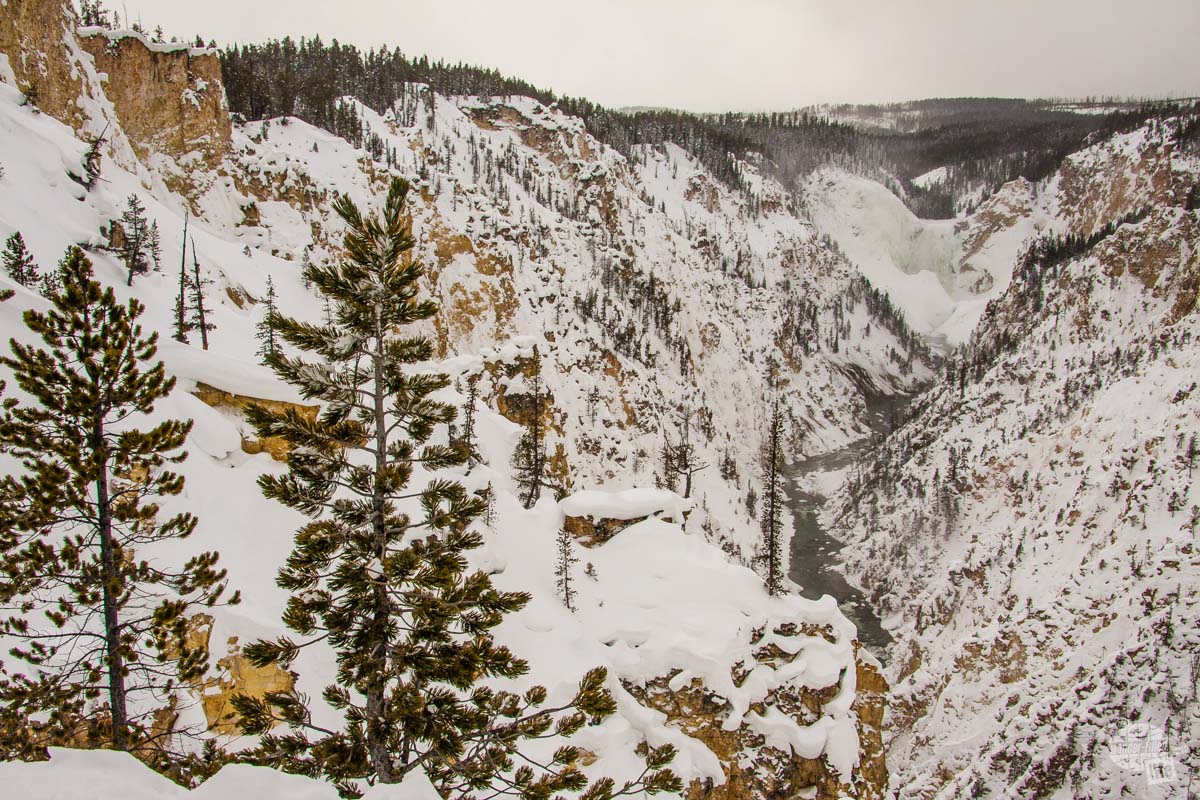
Mostly, we’ve found that the frustrations and difficulties are worth it for the snow-covered landscapes and the adventure.
Travel Resources
What do you use to find a flight?
We use Skyscanner to find deals on flights. Skyscanner has a great interface and compares tons of airlines for the best pricing and routing. That said, it does not always have every airline and some airlines will have better deals on their website. Still, Skyscanner is a great place to start.
Click here to search for a flight.
What do you use to find a hotel?
We typically stay at Hilton properties, so we use the Hilton website. You can find good Hilton Honors discounts or AAA discounts for a hotel there. We make great use of our free night certificates from our Hilton Honors American Express.
Click here to book a Hilton property.
If there are no Hilton properties available, we use TripAdvisor to read reviews and book the hotel. We find we can get the best price that way.
Click here to search for a hotel.
We recently partnered with Stay22 to add interactive maps to each of our destination posts. This will allow you to see a plethora of hotels and vacation rentals all in one responsive map of the area.
What if I need more space than I can get at a hotel?
We use Vrbo for the times when we have rented a cabin for a weekend getaway, like this cabin in Townsend, TN, or needed to rent a house for a large family vacation. We had a great experience with them in terms of refunding deposits when COVID hit and will continue to use them.
Click here to search for a vacation rental.
Who do you use for rental cars?
As a general rule, we book with Hertz for rental cars. We have had nothing but good experiences with them. Plus, we really like unlimited mileage and not worrying about crossing state lines. We have even rented from Hertz overseas in both Slovenia and Croatia.
Click here to book a rental car.
How about booking a cruise?
We have found some amazing prices for booking a cruise through Cruise Direct. We have saved a lot of money on our cruises compared to what we found elsewhere, making a last-minute Bahamas cruise even cheaper.
Click here to book a cruise.
What if I want to rent an RV?
We highly recommend Outdoorsy for RV rentals. We rented a camper van for a week to visit Rocky Mountain National Park for the elk rut and Custer State Park for the Buffalo Round-Up and had a blast. The program was easy to use and we really enjoyed the freedom of having a camper van for that trip.
Click here to rent an RV.
What do you use for booking tours?
We don’t often book tours. Typically, we like to do stuff on our own. That said, there are some experiences you can’t have any other way. So, when we do want to book a tour, we always check Viator first.
Click here to book a tour.
Do you use anything to get discounts on the road?
We make extensive use of both Good Sam and AAA on the road. Good Sam is normally regarded as a discount card for RVers at campgrounds and Camping World but anyone can use the 5 cents off a gallon at the pump at both Pilot and Flying J.
Click here to get a Good Sam membership.
We have had AAA as long as we have been married and it has more than paid for itself in discounts at hotels, aside from the peace of mind of having roadside assistance. Add in paper maps and the ability to get an international driver’s license and it is more than worth it for any traveler out there.
Click here to get a AAA membership.

